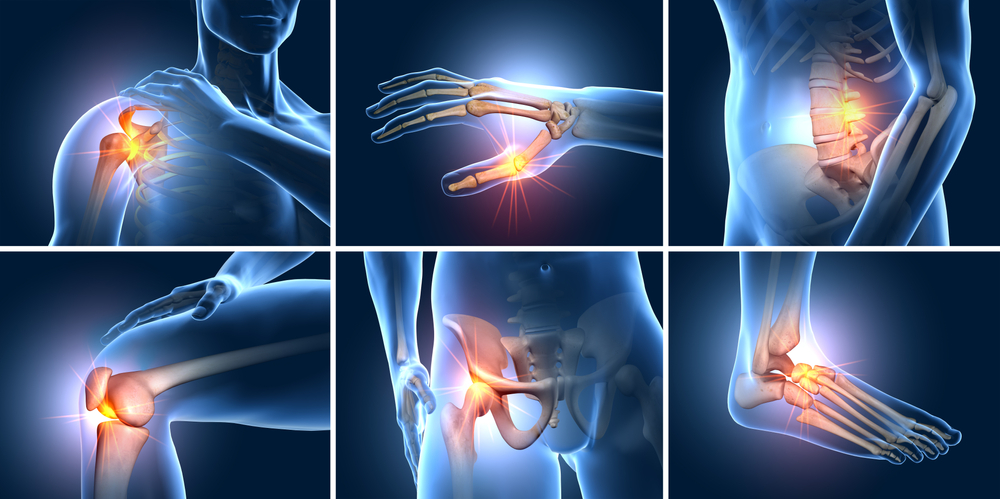Joint pain is one of the most common physical complaints across all age groups. Whether it’s a dull ache in the knees after a long walk or a sharp, stabbing sensation in the shoulder during movement, joint discomfort can disrupt daily life and signal an underlying issue. Understanding the causes of joint pain is essential not only for managing symptoms but also for taking preventive measures and seeking the right treatment.
1. Arthritis: The Most Common Culprit
When most people think of joint pain, arthritis is usually the first condition that comes to mind — and for good reason. There are over 100 types of arthritis, but the two most prevalent are osteoarthritis (OA) and rheumatoid arthritis (RA).
- Osteoarthritis is a degenerative condition caused by the wear and tear of cartilage that cushions the joints. It’s most common in older adults and frequently affects the knees, hips, and hands.
- Rheumatoid arthritis, on the other hand, is an autoimmune disorder. It causes the body’s immune system to mistakenly attack the lining of the joints, resulting in inflammation, swelling, and pain.
Both types of arthritis can lead to chronic discomfort and reduced mobility if left unmanaged.
2. Injuries and Overuse
Injuries are a frequent source of joint pain, particularly in athletes or individuals with physically demanding jobs. Sprains, strains, and fractures can damage the joint structure and lead to long-term issues if not treated properly.
Overuse injuries are another common factor. Repetitive movements, such as typing, lifting, or running, can stress a joint over time, causing inflammation and pain. Conditions like tendinitis (inflammation of a tendon) and bursitis (inflammation of the fluid-filled sacs around joints) often arise from overuse.
3. Gout and Other Crystal-Related Conditions
Gout is a type of arthritis triggered by a buildup of uric acid crystals in the joints, usually in the big toe. This condition can cause sudden, severe attacks of pain, swelling, and redness.
Other crystal-related conditions, like pseudogout, are caused by calcium pyrophosphate deposits. Though similar in presentation to gout, they require different treatment approaches.
4. Infections and Illnesses
Certain infections can lead to joint pain. For example, septic arthritis occurs when a joint becomes infected with bacteria, viruses, or fungi. It can develop rapidly and often requires immediate medical intervention.
Additionally, systemic illnesses such as lupus or Lyme disease may present joint pain as a symptom. These conditions typically involve widespread inflammation that affects multiple systems in the body, including the joints.
5. Lifestyle Factors
While some causes of joint pain are out of our control, lifestyle plays a significant role. Factors such as:
- Obesity: Extra weight puts added stress on joints, particularly the knees, hips, and spine.
- Sedentary lifestyle: Lack of regular movement can weaken muscles and reduce joint flexibility.
- Poor posture: Incorrect alignment can place undue stress on joints, especially in the neck, back, and shoulders.
Adopting a healthier lifestyle can often reduce or prevent joint discomfort.
6. Age and Degeneration
As we age, our joints naturally experience wear and tear. The cartilage that cushions joints begins to thin, and synovial fluid, which lubricates joints, may decrease. These age-related changes contribute to increased stiffness, reduced flexibility, and more frequent joint aches — even without any underlying disease.
7. Autoimmune Disorders
Beyond rheumatoid arthritis, other autoimmune diseases such as psoriatic arthritis, ankylosing spondylitis, and lupus can affect the joints. These conditions involve the immune system attacking healthy tissue, leading to inflammation and chronic joint pain.
They often present alongside other symptoms like skin rashes, fatigue, or eye inflammation, and require long-term management with the help of specialists.
Seeking Relief: When to See a Doctor
If your joint pain lasts more than a few days, continues to worsen, or comes with symptoms like swelling, redness, or fever, it’s important to consult a healthcare provider. Getting an accurate diagnosis is essential for effective treatment. Depending on your symptoms, your doctor may order imaging tests, lab work, or refer you to a specialist such as a rheumatologist or orthopedic surgeon. For those in the Glenview area, expert care is available for conditions like arthritis and autoimmune-related joint pain, ensuring you get the support and treatment you need close to home.
Final Thoughts
Joint discomfort is more than just a nuisance—it’s a signal from your body that something may need attention. From common conditions like arthritis and injuries to more complex autoimmune or infectious causes, understanding the root of your joint pain is the first step toward relief.
With early intervention, lifestyle adjustments, and medical support, many people can reduce their pain, improve mobility, and regain control over their daily activities. Listen to your joints — they might be telling you more than you think.
